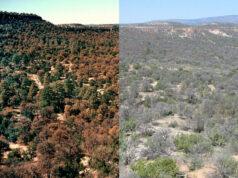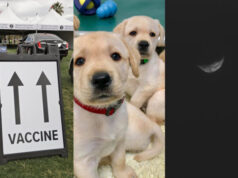COVID Curriculum Brings Science Home for High School Students
New research outlines a UArizona-developed curriculum that teaches high school students about coronaviruses, genetics and more.
Mikayla Mace Kelley
Today
University Communications
at home.jpg
High school students were able to study COVID from their couches thanks to the curriculum developed by Nadja Anderson.
Science and Technology Social Sciences and Education
COVID-19 COVID-19 vaccine Education Experts Outreach Science STEM
Media contact(s)
Researcher contact(s)
Nadja Anderson
Department of Molecular and Cellular Biology
Find your dream job in the space industry. Check our Space Job Board »
When the pandemic sent many students home, University of Arizona researchers and Tucson teachers quickly adapted to the challenges of teaching science without a lab or classroom. A new paper, published in the journal The American Biology Teacher, outlines an at-home science lesson developed at UArizona to teach high schoolers about bioinformatics and SARS-CoV-2, the virus that causes COVID-19. The lesson plan is available for interested high school teachers across the country.
Since the lesson plan was created before new COVID-19 variants became prevalent, the paper’s authors included an addendum that recommended students and teachers explore emerging variants using the activity. As the pandemic continues, new lessons and concepts can be taught based on the techniques outlined in the paper, the researchers say.
BIOTECH Project_08112021_21_D.JPG
Valeria Maleny Moreno Rodriguez, a first year graduate student in Applied Biosciences, looks at bacteria transformed with a foreign gene. This activity is part of a set of high school classroom activities Anderson provides to high schools. Moreno Rodriguez will be participating in the instruction of these laboratory lessons in the high school classrooms.
Michele Vaughan
“This past school year was challenging for those of us in education. However, lessons concerning SARS-CoV-2 were a natural direction for virtual instruction since it combines the relevance of COVID with at-home computer use for genetic data analysis,” said lead study author Nadja Anderson, an assistant professor of practice in the UArizona Department of Molecular and Cellular Biology and director of the department’s BIOTECH Project.
Since 1996, the BIOTECH Project has provided Arizona teachers with materials, equipment and training to conduct molecular genetics experiments with high school students. A subset of the high school students who participate in the BIOTECH Project also take college-level courses in molecular and cellular biology, are enrolled at the university, earn university credit and are exposed to university laboratory research.
The paper describes a lesson plan that was created before COVID-19 vaccines were introduced. At least three Tucson-area high schools used the plan to study proteins of all seven coronaviruses: the four that cause the common cold, and the SARS, MERS and SARS-CoV-2 viruses. The goal was to investigate whether the SARS-CoV-2 spike protein would be a good candidate for a vaccine.
“We had the students looking at the protein sequences of the spike protein – the protein on the outside of the virus that makes it a prime candidate for your immune system to target and create immune response,” Anderson said.
Students learned how different vaccines work and conducted a detailed comparison of protein sequences.
By looking at the uniqueness of spike proteins, the students were able to see the evolutionary relatedness of the seven coronaviruses from their computer at home. In the end, students compared spike protein sequences of different versions of SARS-CoV-2 to each other and saw that the sequence similarity within the spike proteins make them good vaccine candidates.
All the work was done before COVID-19 variants started to spread widely.
“The paper doesn’t talk about this, but students can use this exercise to analyze some of the variant spike proteins as another exercise, as well,” Anderson said.
Ultimately, she said she hopes students gained an understanding about viruses and vaccines and how they work.
“Education is one of those things where the more you know, the more you can weed your way through all the info out there, and there’s a lot out there that’s incorrect,” Anderson said. “If they understand how vaccines work and are made, then they can critically analyze information and hopefully they can weed their way through all of the misinformation.”
In addition to providing online lessons during the pandemic, Anderson developed hands-on kits to help students conduct science at home. Over 1,000 kits to build electrophoresis boxes – equipment used in molecular biology laboratories to separate and analyze DNA – were sent to students throughout Tucson. Students used their electrophoresis box to analyze DNA from a variety of lessons provided by the BIOTECH Project, including mock crime scene activities and simulated genetic testing.
“Even some kids’ families got involved in the at-home experiments,” Anderson said. “The students became advocates for safety at home, and subsequently the need for vaccinations. The work from the BIOTECH Project not only enhanced the education of these students, but also of our community.”











